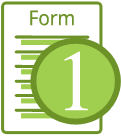June 6, 2012 (Chris Moore)
National monthly home prices increased for the second consecutive month in April, increasing by over two percent from the previous month whether distressed properties were included or excluded according to CoreLogic’s April Home Price Index (HPI).
Including distressed property sales, home prices in April were 2.2 percent higher than in March and were 1.1 percent higher than in April of last year. It was the second consecutive month that sales have increased from the previous month and the first time that has occurred since June 2010.
Excluding distressed properties, monthly home prices improved by 2.6 percent and were 1.9 percent higher than in April of last year.
Nevada (-58.9 percent) continued to post the largest decline in home prices since the market peaked in 2006 followed by both Arizona and Florida (-46.5 percent), Michigan (-43.6 percent) and California (-41.0 percent). That was little changed from last month’s list of worst performing states which included Nevada (-59.9 percent), Arizona (-48.6 percent), Florida (-48.1 percent), Michigan (-45.1 percent) and California (-42.7 percent).
Since the market peak in April 2006, home prices have declined 31.7 percent when including distressed property sales and when excluding distressed property sales, home prices have dropped 23.3 percent since the market peak.
CoreLogic defines distressed property sales as short sales and real estate owned (REO) transactions.
Mark Fleming, chief economist for CoreLogic, stated, “Excluding distressed sales, home prices in March and April are improving at a rate not seen since late 2006 and appreciating at a faster rate than during the tax-credit boomlet in 2010. Nationally, the supply of homes in current inventory is down to 6.5 months, a level not seen in more than five years, in part driven by the ‘locked in’ position of so many homeowners in negative equity.”
Forty-four out of the top 100 Core Based Statistical Areas (CBSAs) experienced year-over-year price declines in April, which was ten less than the revised amount reported in March.
The five states with the highest year-over-year (YOY) appreciation including distressed sales were: Arizona (+8.8 percent), District of Columbia (6.4 percent), Florida (+5.5 percent), Montana (+5.4 percent), and Utah (+5.4 percent). In March, those states were: Wyoming (+5.9 percent), West Virginia (+5.3 percent), Arizona (+5.1 percent), North Dakota (+4.7 percent) and Florida (+4.5 percent).
The five states with the greatest YOY depreciation including distressed sales were: Delaware (-11.9 percent), Illinois (-6.8 percent), Alabama (-6.6 percent), Rhode Island (-6.2 percent), and Georgia (-5.6 percent). In March, those states were: Delaware (-10.6 percent), Illinois (-8.3 percent), Alabama (-8.0 percent), Georgia (-7.3 percent) and Nevada (-5.8 percent).
The five states with the highest YOY appreciation excluding distressed sales were: Utah (+5.3 percent), Idaho (+5.1 percent), Mississippi (+4.7 percent), Louisiana (+4.6 percent) and Arizona (+4.6 percent). In March, those states were: Idaho (+5.4 percent), North Dakota (+5.1 percent), South Carolina (+4.7 percent), Montana (+3.5 percent) and Kansas (+3.4 percent).
The five states with the greatest YOY depreciation excluding distressed sales were: Delaware (-10.1 percent), Rhode Island (-6.2 percent), Alabama (-4.4 percent), Vermont (-2.8 percent) and Connecticut (-2.3 percent). In March, those states were: Delaware (-7.6 percent), Alabama (-4.1 percent), Nevada (-3.9 percent), Vermont (-3.9 percent) and Rhode Island (-2.9 percent).
Tags: CoreLogic, home prices, distressed property sales, appreciation, depreciation
Sources:
CoreLogic




